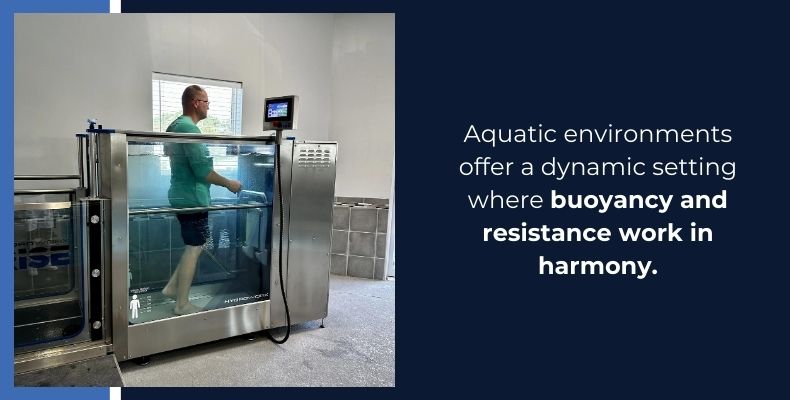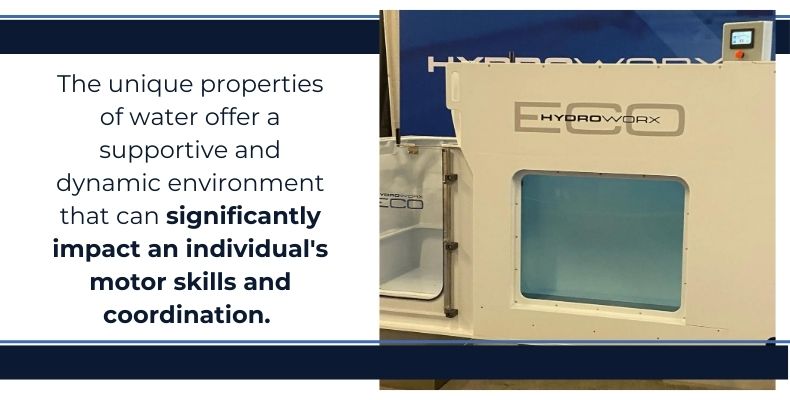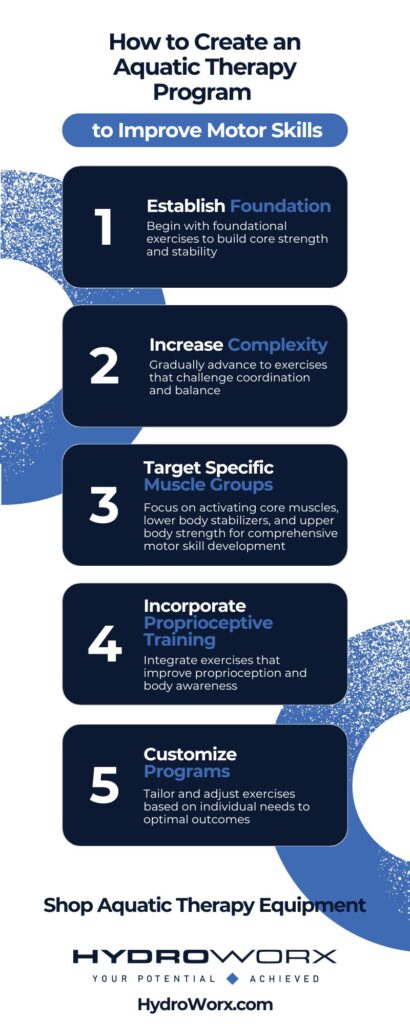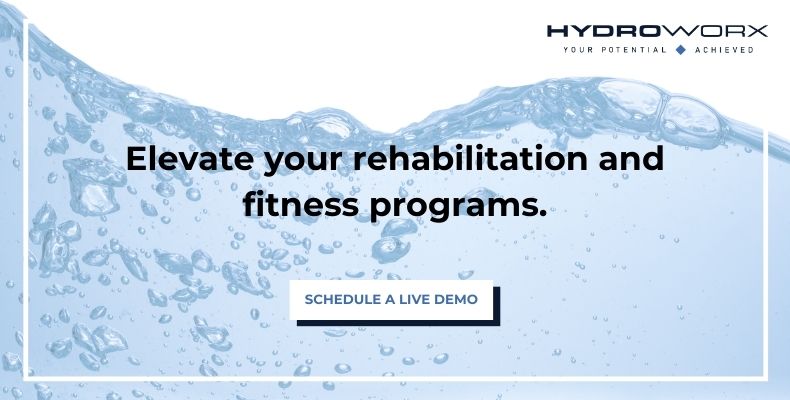Enhancing Motor Control and Stability Through Aquatic Exercises
In the rehabilitation and fitness industries, the significance of motor control and stability cannot be overstated. The ability to perform movements with precision, coordination, and balance plays a crucial role in achieving optimal physical function and overall well-being. Hydrotherapy harnesses the unique properties of water and helps to improve motor control and stability through specialized aquatic exercises.
Aquatic environments offer a dynamic setting where buoyancy and resistance work in harmony to challenge the body in ways that are distinct from traditional land-based exercises. This interplay between water’s properties and targeted movements enables individuals to enhance their motor skills, refine coordination, and build core strength more effectively. In this blog article from HydroWorx, we will explore the potential of aquatic therapy in enhancing motor control and stability and uncover innovative strategies and evidence-based approaches that can revolutionize rehabilitation protocols and fitness programs. Keep reading to learn more, and if you’re interested in incorporating aquatic exercises into your offerings, shop our selection of hydrotherapy equipment.

The Benefits of Aquatic Environment for Motor Control
Incorporating aquatic exercises into rehabilitation and fitness routines provides a host of benefits for enhancing motor control and stability. The unique properties of water offer a supportive and dynamic environment that can significantly impact an individual’s motor skills and coordination. Below are key points highlighting the advantages of utilizing the aquatic setting for improving motor control:
- Buoyancy: The buoyant force of water reduces the effects of gravity on the body, allowing for movements with decreased weight-bearing load. This reduction in gravitational pull enables individuals to perform exercises with greater range of motion and less strain on joints, promoting better motor control.
- Resistance: Water provides natural resistance to movement, requiring greater effort from muscles to overcome this resistance. This resistance challenges muscle groups and helps to improve strength, coordination, and motor control during aquatic exercises.
- Variable Environments: Aquatic environments offer varying levels of water depth, which can be adjusted to provide different levels of challenge for individuals working on motor control exercises. Progressions in water depth can target specific areas of development and enhance motor control skills effectively.
By capitalizing on the benefits of the aquatic environment, physical therapists and other practitioners can help patients engage in targeted exercises that promote enhanced motor control, balance, and stability while reaping the therapeutic advantages of water’s properties.

Specific Aquatic Exercises for Improving Motor Skills
Specific aquatic therapy exercises have been designed to target and improve motor skills, coordination, and stability effectively. These exercises capitalize on the unique properties of water to create a challenging yet supportive environment for individuals seeking to enhance their motor control. Some of these exercises include:
- Water Walking: Walking in water challenges balance and coordination while the resistance of water engages leg muscles, promoting lower body strength and stability.
- Arm Circles: Performing arm circles in water enhances shoulder stability, improves range of motion, and targets upper body motor control and coordination.
- Leg Lifts: Leg lifts in water work on improving hip stability, leg strength, and balance control, essential for overall motor control and lower body coordination.
- Core Stabilization: Core stabilization exercises in water, such as abdominal holds or plank variations, target deep core muscles, enhancing trunk stability and overall posture.
- Balancing Exercises: Balance challenges in water, like standing on one leg or performing weight shifts, improve proprioception, stability, and motor control for better coordination and functional movement patterns.
By incorporating these targeted aquatic exercises into a rehabilitation or fitness program, practitioners can help patients enhance their motor skills, coordination, and stability in a supportive and engaging aquatic environment.

Integrating Aquatic Therapy Into Rehabilitation Protocols
Aquatic therapy has become a cornerstone in rehabilitation programs due to its versatility and effectiveness in improving motor control and stability. Incorporating aquatic exercises into rehabilitation protocols offers a holistic approach to addressing a wide range of conditions while focusing on enhancing functional movement and coordination. There are many benefits to integrating aquatic therapy into rehabilitation programs, including:
- Individualized Programs: Aquatic therapists design personalized programs tailored to each individual’s specific needs, targeting motor control deficits and stability challenges effectively.
- Multisensory Stimulation: The sensory-rich aquatic environment provides unique feedback to the body, stimulating sensory integration and enhancing proprioceptive awareness crucial for motor skills development.
- Progressive Challenges: Aquatic therapy allows for gradual progression of exercises as individuals improve their motor control and stability, ensuring safe and effective advancements in rehabilitation.
- Functional Movement Training: Aquatic therapy emphasizes functional movement patterns and activities of daily living, translating motor control improvements into real-life applications for enhanced functional outcomes.
- Comprehensive Rehabilitation Approach: By incorporating aquatic therapy into rehabilitation protocols, individuals benefit from a comprehensive approach that addresses physical, cognitive, and emotional aspects of motor control and stability, promoting overall well-being and functional independence.

Shop Hydrotherapy Equipment for Aquatic Exercise
The fusion of aquatic exercises and therapy presents a transformative and innovative approach to enhancing motor control and stability, fostering improved coordination and functional movement patterns. By leveraging the unique properties of water, physical therapists and other practitioners can help patients optimize their motor skills and enhance their balance and stability. The integration of specific aquatic exercises into rehabilitation protocols offers a dynamic and effective method to target motor control deficits and facilitate comprehensive recovery and performance enhancement.
Elevate your rehabilitation and fitness programs with HydroWorx’s innovative aquatic therapy pools and underwater treadmills. Contact us today to explore how aquatic therapy can revolutionize your approach to motor skill development, stability training, and overall wellness. Experience the power of water-based therapy in transforming lives and enhancing physical performance.

